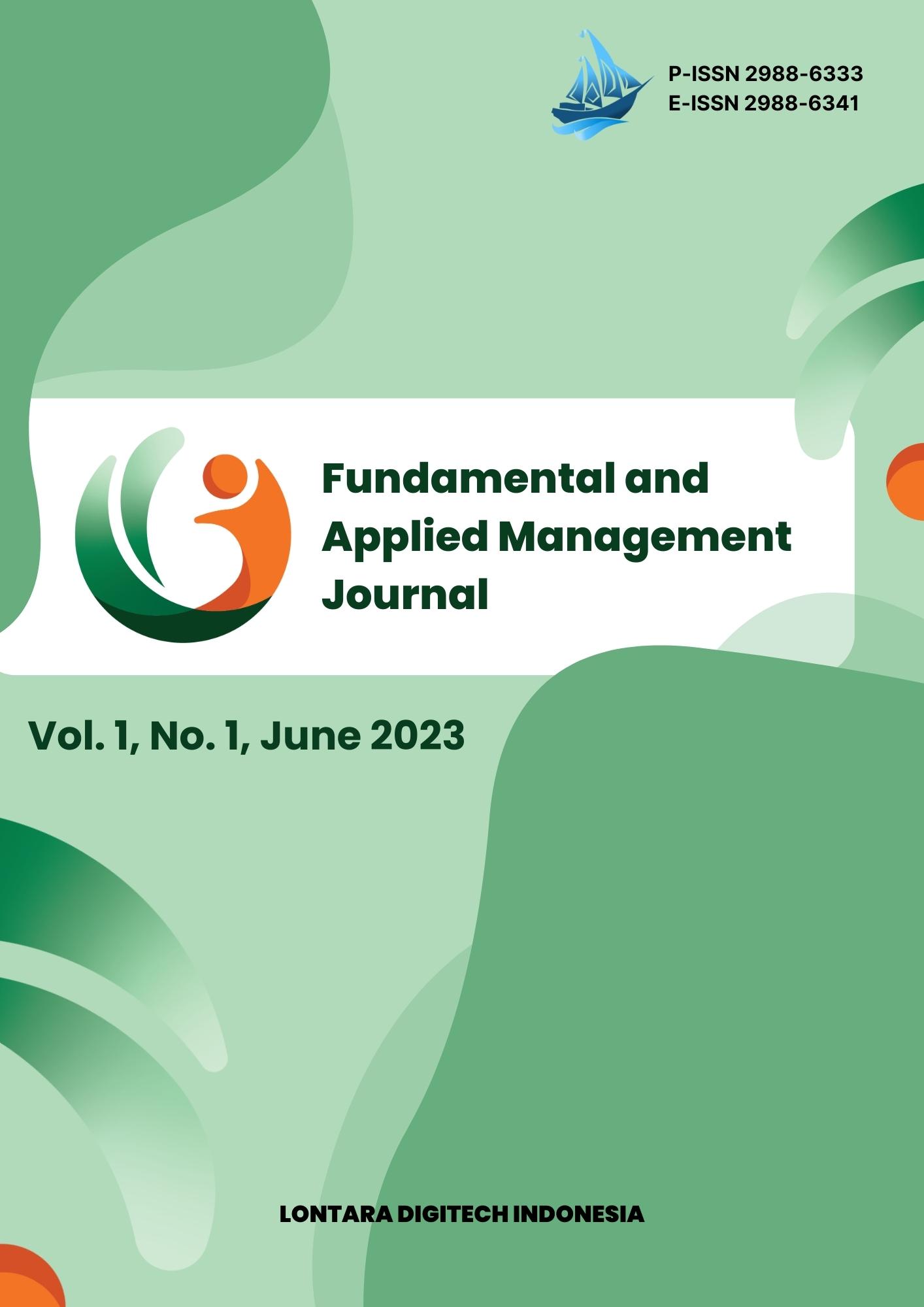Analysis of Segmentation, Targeting, and Positioning (STP) Determination on Sales Volume at Cafe Teras Empang Parepare City
DOI:
https://doi.org/10.61220/famj.v1i1.202303Keywords:
Segmentation, Targeting, Positioning, Sales volumeAbstract
This study aims to assess and analyze whether the STP (Segmentation, Targeting, and Positioning) marketing strategy on the sales volume that has been implemented by Cafe Teras Empang in Parepare City has reached approximately one year (2021-2022). This type of research is descriptive quantitative. The population in this study were all employees of Cafe Teras Empang while the sample of this study were all 36 employees of Cafe Teras Empang as respondents using saturated sampling, which is a sampling technique when all members of the population are used as samples. The data collection techniques were carried out by means of questionnaires conducting interviews and questionnaires. While the data analysis technique used is to use Multiple Linear Regression Analysis using two statistical test methods, namely Simultaneous Test (Test f). Based on the results of research with statistical data analysis, the indicators in this study are valid and the variables are reliable. In the classical assumption test, it is proven that all indicators are normally distributed and there is a significant linear relationship between each independent variable and the dependent variable, for influence Segmentation, Targeting, and Positioning all have a positive direction and are not significant in their influence on the sales volume at Cafe Teras Empang in Parepare City.
References
Andaleeb, S. S. (2016). Market segmentation, targeting, and positioning. In Strategic marketing management in Asia: case studies and lessons across industries (pp. 179-207). Emerald Group Publishing Limited.
Armstrong, G., Adam, S., Denize, S., & Kotler, P. (2014). Principles of marketing. Pearson Australia.
Barman, A., Das, R., & De, P. K. (2021). Impact of COVID-19 in food supply chain: Disruptions and recovery strategy. Current Research in Behavioral Sciences, 2, 100017.
Beske, P., Land, A., & Seuring, S. (2014). Sustainable supply chain management practices and dynamic capabilities in the food industry: A critical analysis of the literature. International journal of production economics, 152, 131-143.
Bourletidis, K., & Triantafyllopoulos, Y. (2014). SMEs survival in time of crisis: strategies, tactics and commercial success stories. Procedia-Social and Behavioral Sciences, 148, 639-644.
Ekblom, M. (2016). Challenges facing food processing MSEs in Tanzania: A qualitative case study of the sunflower oil industry in Babati, Manyara.
Kasali, R. (2001). Membidik pasar Indonesia Segmentasi, Targeting dan Positioning. Gramedia: Jakarta.
Lee, J. L., James, J. D., & Kim, Y. K. (2014). A reconceptualization of brand image. International journal of business administration, 5(4), 1.
Naini, N. F., Santoso, S., Andriani, T. S., & Claudia, U. G. (2022). The effect of product quality, service quality, customer satisfaction on customer loyalty. Journal of consumer sciences, 7(1), 34-50.
Öztamur, D., & Karakadılar, İ. S. (2014). Exploring the role of social media for SMEs: as a new marketing strategy tool for the firm performance perspective. Procedia-Social and behavioral sciences, 150, 511-520.
Renigier-Biłozor, M., Janowski, A., Walacik, M., & Chmielewska, A. (2022). Modern challenges of property market analysis-homogeneous areas determination. Land Use Policy, 119, 106209.
Smith, W. K., Lewis, M. W., & Tushman, M. L. (2016). Both/and” leadership. Harvard Business Review, 94(5), 62-70.
Sugiyono. (2017). Metode Penelitian Kuantitatif, Kualitatif, dan R&D. Bandung: Alfabeta.
Swastha, B., & Handoko, T. H. (2005). Manajemen Pemasaran. Modern Liberty: Yogyakarta.
Tien, N. H., Vu, N. T., & Tien, N. V. (2019). The role of brand and brand management in creating business value case of Coca-Cola Vietnam. International Journal of Research in Marketing Management and Sales, 1(2), 57-62.
Downloads
Published
Issue
Section
License
Copyright (c) 2023 Fundamental and Applied Management Journal

This work is licensed under a Creative Commons Attribution-ShareAlike 4.0 International License.













 Email: famj@lontaradigitech.com
Email: famj@lontaradigitech.com
